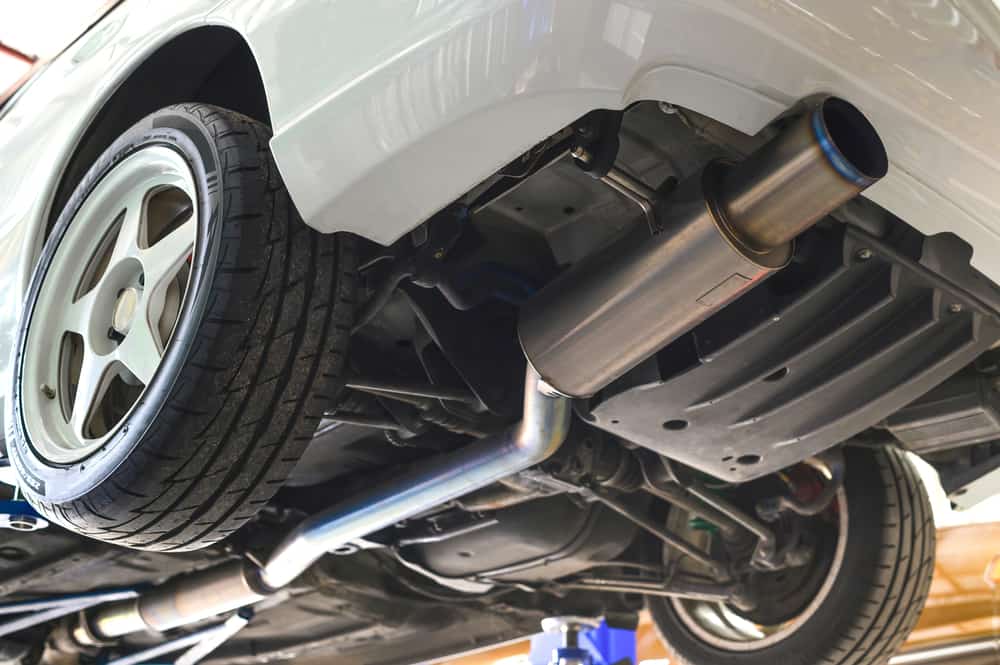
I was introduced to welding years ago when I used to work on my own cars. That was back before I could afford to put them in the shop. Learning to weld helped me avoid the repair bills that always seemed beyond my budget. Nevertheless, those experiences were beneficial, and my father-in-law was a good teacher. He taught me that when welding certain materials, it was best to use specific techniques and processes. And I learned on my own just how difficult it can be to weld pipes or tubes from awkward positions or in cramped spaces.
Today, stainless steel automobile exhaust systems handle high temperatures and avoid oxidation while aluminum exhaust systems help minimize a vehicle’s weight. Titanium combines these benefits and is often used in high-performance autos—titanium is even used for the frames of Formula 1 and NASCAR racing cars. The aerospace industry, though, is where titanium welding is most often employed. When working with titanium, GTAW or TIG welding is typically implemented. And since an orbital process is best for TIG welding titanium tubes, let’s take a look at the TIG welding process when working with titanium tubes and discover the most advantageous orbital processes.
How to TIG Weld Titanium Tubes
Although several tubing materials may be used across a wide range of applications, certain materials and/or alloys excel for specific use cases. For example, stainless steel is the preferred material for sanitary tube welding. Similarly, for applications where the strength-to-weight ratio is critical—such as in rockets or high-end racing vehicles—titanium is the material of choice. However, there are specific keys, as listed below, that need to be followed when using this metal.
Keys to Good Titanium Tube TIG Welds
🔑 Keep the weld area clean
The most important thing to remember when welding titanium is to keep the work environment clean, as contamination can lead to embrittlement.
🔑 Avoid nitrogen and oxygen
Above 400℃, nitrogen and oxygen will diffuse into titanium, making it brittle and likely to crack or break while the tensile strength actually increases. As titanium tubes are used in critical applications, any failure is dangerous and can even cause fatalities.
🔑 Maintain gas coverage
Gas coverage must be maintained to avoid exposing the titanium to the air where nitrogen, oxygen, and hydrogen may contaminate the weld.
🔑 Do not use air-powered tools
Any type of air flow, including the use of air-powered tools, that may either dissipate the gas coverage or blow contaminants into the weld area should be avoided.
🔑 Perform frequent maintenance checks on equipment
Welding titanium tubes can be straightforward, as far as TIG welding goes, provided the equipment is kept in good working order and operators follow a preventive maintenance program that includes daily checks.
By following the guidelines listed above will welders can minimize the probability of substandard titanium. However, for the best results, you should explore whether an orbital process should be used.
The Best Orbital Processes for TIG Welding Titanium Tubes
TIG welding is the preferred technique when the highest quality welds, like those required for titanium tubes, are necessary. However, TIG welding can be very challenging if done manually, and the challenge is only heightened for tubing applications. TIG welding not only requires the welder to have extensive experience, but the work is physically demanding as well. The welder must maintain gas coverage, work and travel angles, and the feeder speed for the duration of a 360 degree weld. For these reasons it is unlikely that good welds can be created manually.
If working on automobile tubes, less than optimal welds due to nitrogen contamination can be tolerated. Those welds can be brushed or polished to remove the gold discoloration that forms, which indicates that the weld may fail. However, for aerospace applications, these substandard welds are unacceptable, and they cannot be reworked. The level of load stresses involved mandate strong welds; therefore, manual welding may result in higher material costs and more work-hours to replace the unusable ones. All of these issues can be avoided by instituting an orbital welding process, which has the following distinct advantages over manual TIG welding.
Advantages of Orbital TIG Welding Titanium Tubes
✅ Greater welding precision
✅ Less probability of contamination
✅ Faster process than manual
✅ Easy control of welding parameters
✅ Safer for the welder/technician
As the above list illustrates, the use of an orbital welding process could make your titanium tube welding job easier, faster, and less costly. Additionally, with advanced orbital welding machines that include remote control and diagnostics, the quality of your work can be raised to the par of the best available in the industry.
Arc Machines, Inc. specializes in high-quality, precision orbital TIG welding for all types of materials, including titanium tubes, and has been an industry leader in delivering advanced welding technology processes and equipment since its founding by former NASA engineers in 1976. For inquiries regarding products, contact sales@arcmachines.com. For service inquiries, contact service@arcmachines.com. Arc Machines welcomes the opportunity to discuss your specific needs. Contact us to arrange a meeting.





